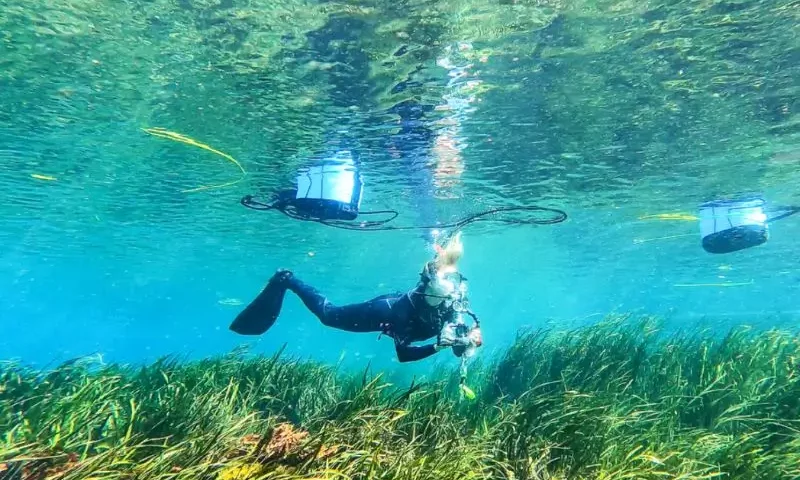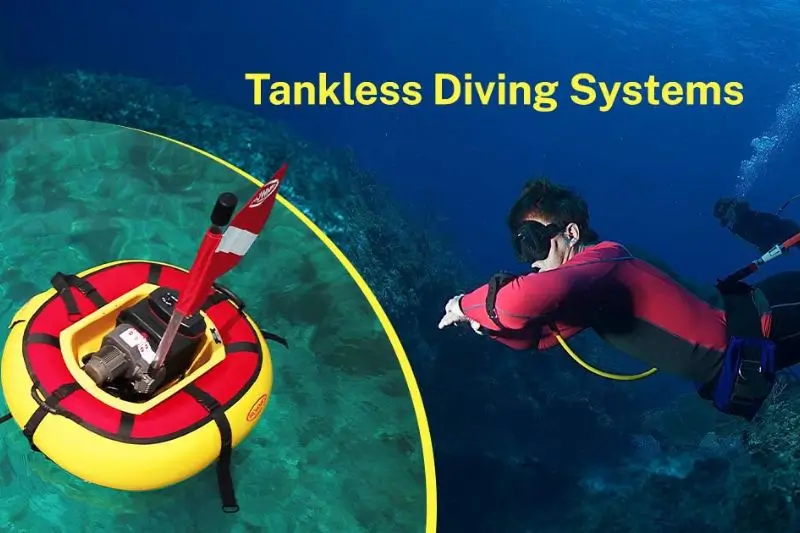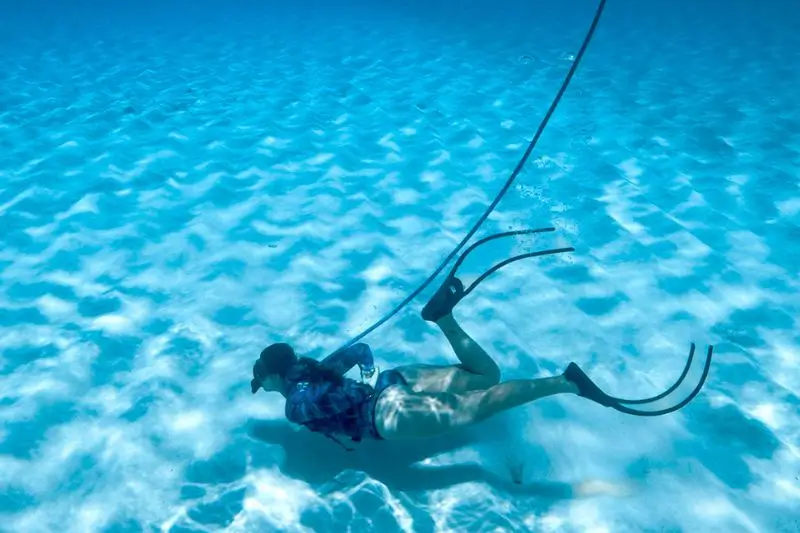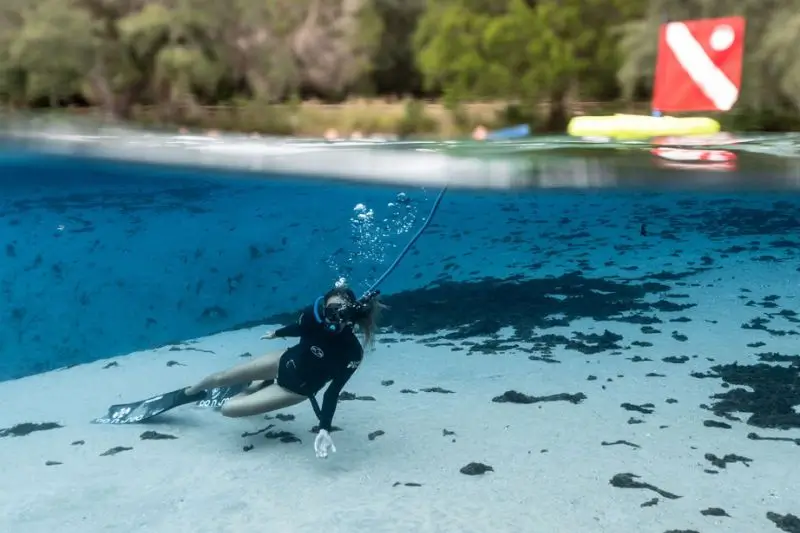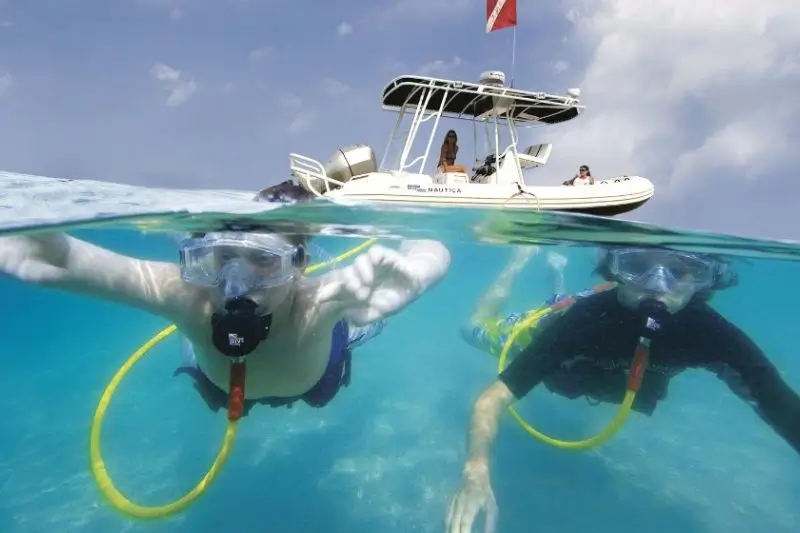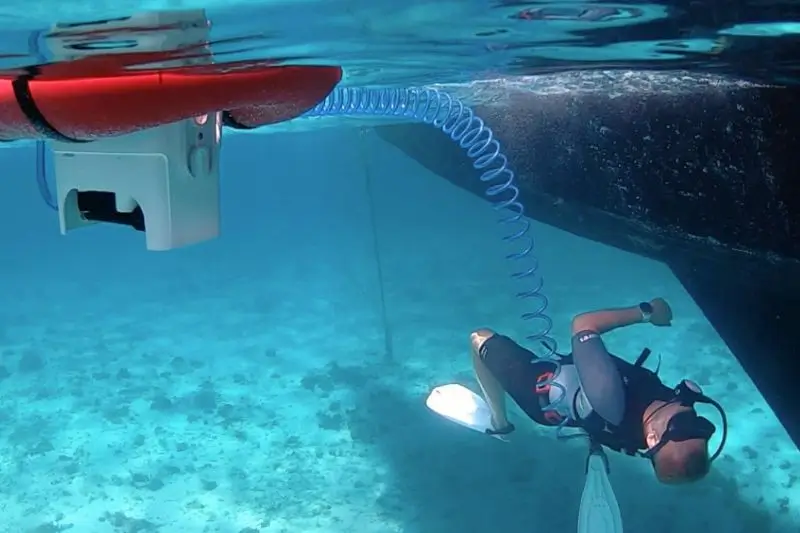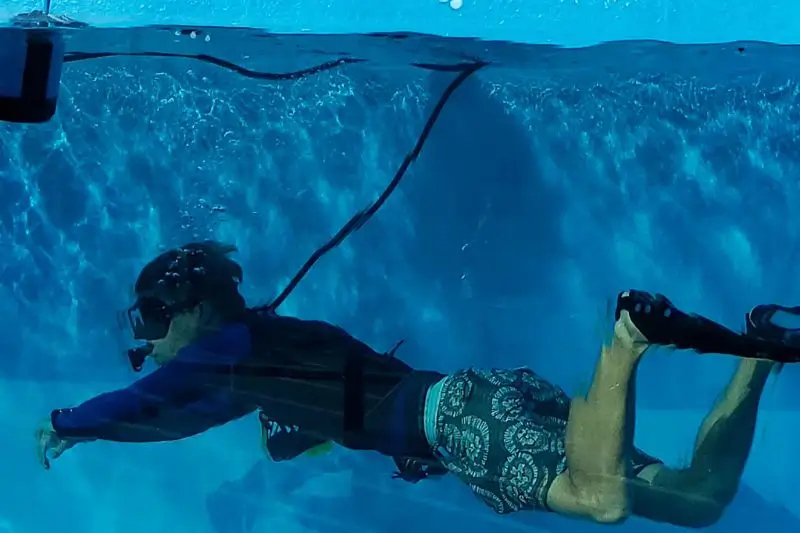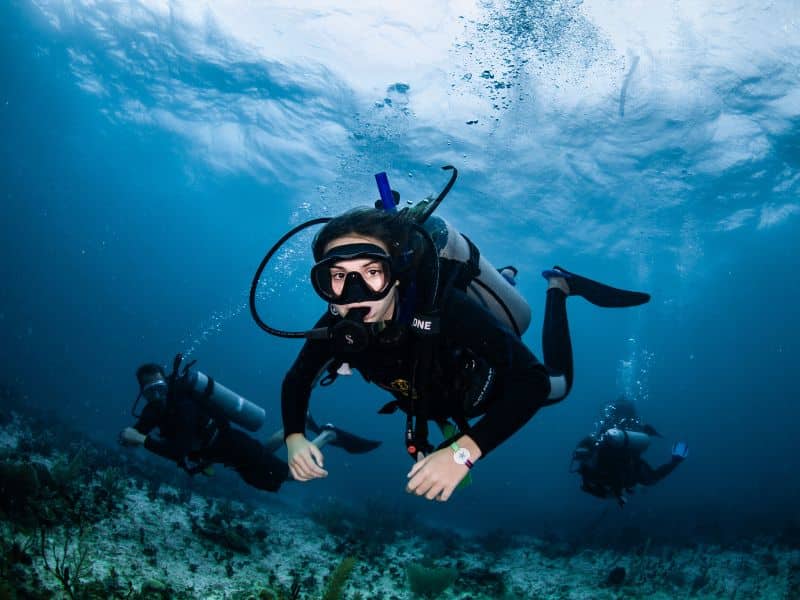Today’s the day. We’re talking about the tankless diving system.
A system that lets you dive without a tank, without hauling around heavy cylinders.
More freedom. More time underwater. More mobility… those are the perks, they say.
With a tankless diving system, you can move differently underwater since you’re not tied to traditional tanks. Although, yes, you are still dependent on other things. Humans still don’t have gills.
A tankless scuba diving system changes how a dive feels, but is it for everyone? What limitations does it have? How steep is the learning curve? How deep can you go with this system?
Phew! That’s a lot of questions to answer.
Your tankless scuba gear doesn’t replace classic equipment; it’s just another way to dive. From the mask to the full gear, every part of the tankless scuba diving system is different. We’ll break that down too.
In this article, you’ll discover how a tankless diving system works, the types of gear available, what to expect from it, and how to start using it if you’re curious to try this different approach to diving.
Get ready. We can’t promise this novelty will win you over. But one thing’s for sure: a tankless scuba diving system is another way to explore the ocean. One that challenges the SCUBA status quo.




